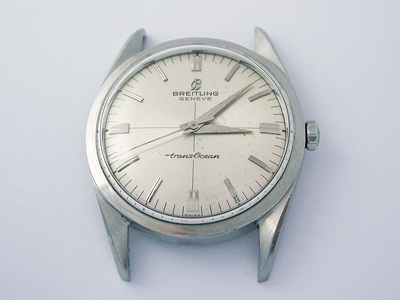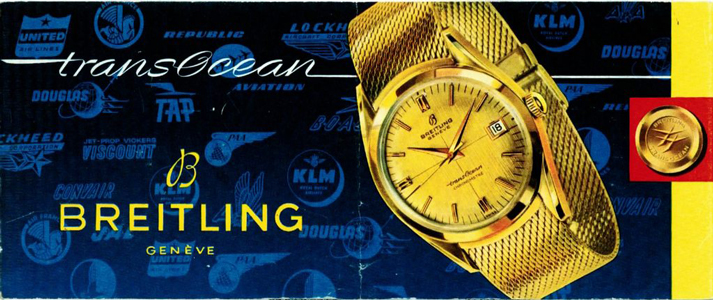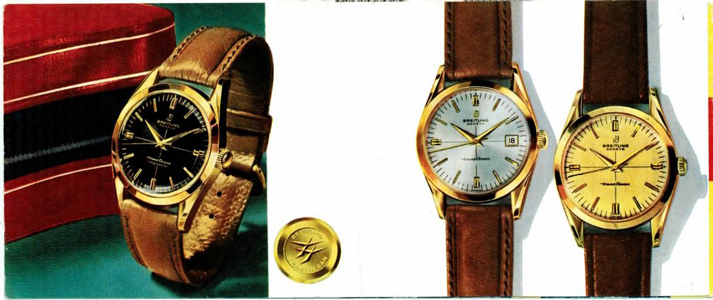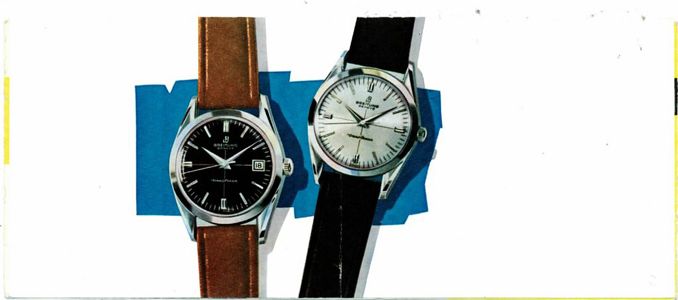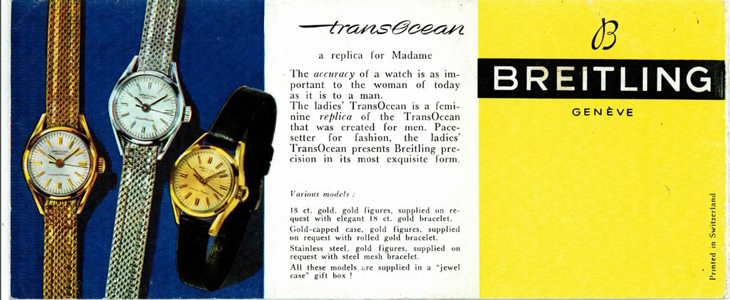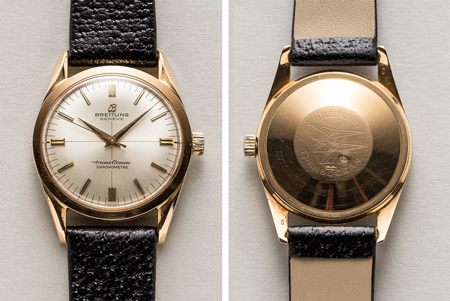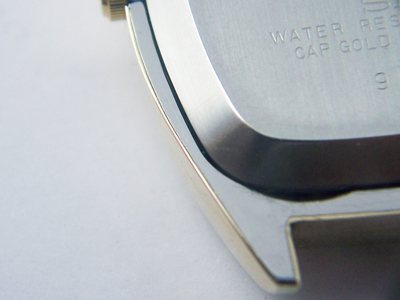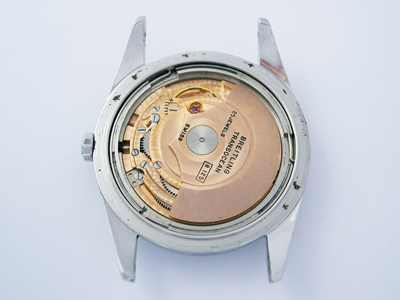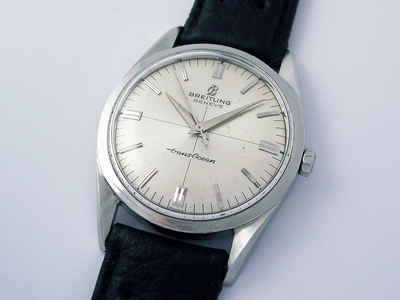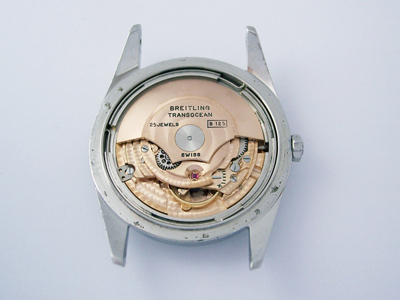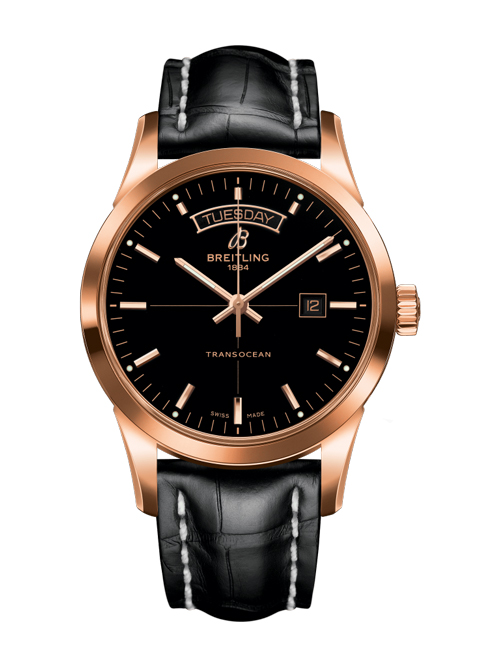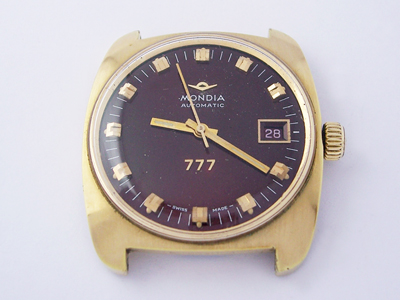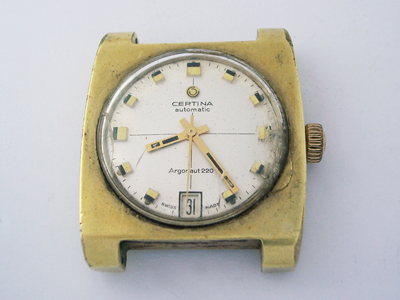A few years ago I wrote about a Breitling TransOcean chronograph on the blog, in which I referred to the subject of this post, the original TransOcean automatic. I had one in for servicing recently, so let’s have a closer look.
(Click pictures to enlarge)
The TransOcean is a popular model in Breitling’s history and this watch is where it all started. Breitling released their first TransOcean model in 1958, following on from their Navitimer and SuperOcean lines in the years prior.
Aimed more at the intercontinental business traveller than pilots, the watch was available in stainless steel, gold cap and 18kt gold cases with an optional matching rolled gold mesh bracelet.
As this launch catalog shows, the watch was available with either black, white or gold dials, with or without date.
There was a ‘replica for Madame’ produced too in the same case configurations, again with optional matching bracelets.
The top of the model range were undoubtedly the 18kt solid gold cased models, which were all fitted with higher specification, chronometer rated movements. This model (both the steel and gold) was the first to feature the twin aircraft tails that was used subsequently on the Navitimer models.
It’s worth mentioning here the difference between gold capped and gold plated watches, as they are quite different. A gold plated watch generally consists of a base metal case onto which a thin layer of gold is adhered by electro-plating. It’s a cost effective way of giving the visual impression of a gold watch, though it’s not uncommon to see the plating worn through to the base metal beneath on case edges or lug ends, and/or the plating reacting to environmental conditions over time.
Gold capping on the other hand is a much higher quality process that was popular during the 1950’s and 60’s. It involves forming a separate gold ‘overcoat’ in the same shape as the case which is then bonded onto the solid stainless steel case beneath. The amount of gold used in a capped case needs to be much greater in order to form the shell, typically between 100 – 240 microns thick (0.1 – 0.24 millimeters). By comparison, a good quality gold plated case is typically only 20-40 microns thick and they can often be much less, even down to 2-4 microns on the cheapest watches. On better quality plated cases, the thickness of the plating can often be found stamped between the lugs.
A gold capped case is quickly spotted by looking at the rear of the watch. As the cap is just that, the stainless steel of the case will be clearly visible on the rear, as opposed to a plated case where the entire rear of the case will be gold.
With both case types, the caseback will generally be stainless steel as a plated caseback would wear through very quickly when worn due to friction and exposure to skin acids.
Leaving ‘case-tech’ behind and returning to the subject of this post, removing the caseback revealed a Breitling cal. B125 which is essentially an ETA cal. 2451 automatic with a modified and engraved winding rotor and additional perlage decoration. With a beat rate of 18,000 bph and the top-spec of 25 jewels in this instance, it’s a solid workhorse calibre found in many automatic watches from this period.
The cal. B126 found in the models with an additional date complication, is a similarly modified ETA cal. 2452 sibling, and the ladies models were fitted with ETA 2365 and 2369 calibres for the non-date and date models respectively.
With the winding stem removed, the watch is released from the case by compressing three spring ends which sit in a groove, a simple yet effective way of securing the watch inside the case.
There is little to report on the movement this time, which was only in need of a routine service. The mainspring barrel had been seriously over-oiled during the last service, but thankfully hadn’t spread much farther than the ratchet wheel.
With the movement serviced, the case cleaned and crystal polished, all that is left to do is point out the pleasing aesthetic features of this watch. The cross-hair dial is very nice with simple applied logo, hour markers and the ‘transOcean’ script. With no lume on the dial markers or hands to deteriorate, it will maintain its classic looks over time. The case too is uncomplicated with nicely shaped lugs and a branded crown. At just 35mm excluding the crown and just 10mm thick, it is quite small by modern standards, but it will slip just as easily under a shirt cuff now as it did 60 years ago.
I can’t end this article without mentioning that Breitling released an updated version of the model in 2011, sadly devoid of all the charm of the original – to my eye anyway. The case was increased to 43mm and fitted with a flat sapphire crystal, lume was added to the hour markers and hands and it was only available with a date, or split calendar. They didn’t even use the original ‘transOcean’ script from the original on the dial. You may think differently, but it’s a complete miss in my opinion.
Rich.
** Many thanks to Aaron Ogles for letting me feature his watch on the blog. **

